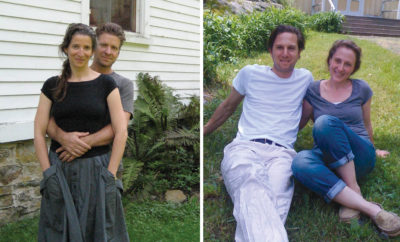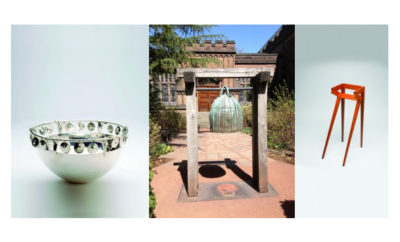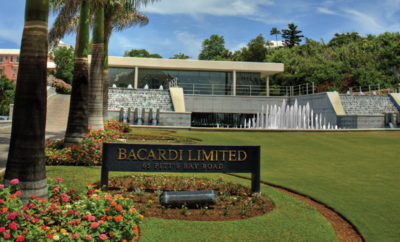 CRAIG ROBINS
CRAIG ROBINS
Design
Collector’s Choice: Patron With a Passion
DEVELOPER AND DESIGN MIAMI COFOUNDER CRAIG ROBINS TALKS ABOUT HIS LOVE FOR DESIGN, ARCHITECTURE, AND ART
Craig Robins is an entrepreneur, developer, philanthropist, arts patron, and much more. He also is the cofounder and part-owner of Design Miami, which began in 2005 and encompasses two annual fairs (in Miami and Basel) that have changed the landscape of collecting.
Early in his career, in the 1980s, Robins and his firm, Dacra, began renovating buildings in Miami Beach’s Art Deco District; from the start he incorporated the work of contemporary artists into historic buildings. He subsequently went on to develop Aqua, a New Urbanist–inspired project on Miami Beach that features ten renowned architects along with artwork by Richard Tuttle and Guillermo Kuitca, as well as several important pieces from Robins’s private collection. His longest and most expansive project has been the transformation of the Miami Design District, most recently in partnership with the LVMH Group, into a center of fashion, design, cuisine, and more; here Robins commissioned installations by Zaha Hadid and Marc Newson.
Robins’s collection spans the worlds of art, design, and architecture, and unlike many others, his work and collecting life tend to intertwine. The Dacra office is full of cutting-edge art and dazzling modern and contemporary design masterpieces, juxtaposed in a way that reflects the connoisseurship, high-brow taste, and personal aesthetic sensibility of its owner.
Tell me where your love of art, design, and architecture started.
It started very early for me, during my college days in Barcelona, where I discovered the urban design and monuments by Antonio Gaudí and fell in love with the work of this master of early modernism. I was equally mesmerized by his buildings and the furniture he designed. Gaudí’s presence in Barcelona is so powerful and stimulating because his groundbreaking vision is expressed and can be seen everywhere you go. When I graduated from college, I went to law school in Miami and immediately after that began developing real estate properties in South Beach, where I had a chance to apply this passion for architecture and preservation. This is also when I began collecting design.
You collect both fine art and design, and one could also say that as a developer commissioning buildings, you collect architecture. Is there a difference?
Art and design are different. A chair is different from a building. A building is different from a piece of art. Some people have a business, and that business is just that, business, and then they make separate contributions to philanthropy and culture. I’m lucky because it actually happens that my work and my ability to make a contribution are one. It is the combination of art and design that really defines my collection. When you collect art, it is wonderful, but when you combine it with design, then you can really transform your life experience.
Can you discuss what you look for in design?
I like design that is functional. When I acquire designed objects, the idea is to live with them, to make them a part of my everyday life. I do have some pieces in storage, but basically I like the idea that I’m going to use it.
How do you define your design collection?
I look to buy examples of artistic expression that I think are important. Usually I focus on what’s making a contribution to this moment. I am passionate about good contemporary design, but only what I personally consider as important historically. I collect pieces by Marc Newson, Zaha Hadid, Ron Arad, Martin Szekely, the Campana brothers, and the Bouroullec brothers, in addition to work by young, under-discovered designers and objects designed by architects.
Yet, contemporary design alone does not satisfy my curiosity. It must be combined with examples of twentieth-century design. I collect work by such masters as Jean Prouvé, Gino Sarfatti, Maria Pergay, Charlotte Perriand, and early Ettore Sottsass. When I collect work by a certain designer, I enjoy collecting in depth.
How important is it to you to be a patron in the largest sense, to give back?
I’m interested in public art. Public art gives artists an opportunity to intersect with a neighborhood. At Aqua I commissioned major pieces by Richard Tuttle and Guillermo Kuitca, I also installed pieces in interiors of buildings, including Mark Handforth‘s Free Bird in the lobby of the Spear building, and I continue to lend pieces there. Some pieces are site specific—the Marc Newson gates that I donated to DASH [Miami’s Design and Architecture High School], for example. Other pieces can be moved. One of my goals is to enable the public to experience great design and architecture. I have always thought that one way to fully express my point of view is to commission artists, designers, and architects to do public work. I consider myself a patron of art, design, and architecture.
You bought one of Buckminster Fuller’s prototypes of his futuristic Fly’s Eye Dome, which you displayed during Design Miami in 2011 along with Fuller’s Dymaxion car, which British architect Norman Foster had recently reconstructed. Tell us about this project.
The Buckminster Fuller dome is a part of my collection; the car, which Norman Foster reconstructed according to the original prototype, was lent to make the show complete. It was a great opportunity to make these two projects available to the public. They were originally shown
It’s interesting to think of architecture as being part of a collection.
Making a building, commissioning a piece of art or design, owning a piece of art, owning a piece of design—in the long run, it comes down to the same thing. When I buy art or commission a building, I am doing so with the idea of its lasting twenty, or forty, or a hundred years or more. I feel a sense of responsibility so I try to do it in a way that adds value.
Do you have a favorite building?
I have a very long list of buildings I admire. On the top of the list are Frank Lloyd Wright’s residences, the apartment buildings Gaudí built in Barcelona, and some of New York City’s new skyscrapers—by Richard Meier, Jean Nouvel, and Frank Gehry. In Miami I love Gehry’s New World Symphony, the Miami Art Museum by Herzog and de Meuron, and I truly anticipate the completion of Zaha Hadid’s parking garage in Miami Beach. Its design has completely reinvented the concept of the parking garage.
Much of your collection is situated in the Dacra offices. Tell me what that space looks like.
In my office I have a rare and monumental desk by Jean Prouvé, the Backpack sofa designed by Hella Jongerius in 2007, a Z-Car prototype by Zaha Hadid, and a Star lamp by Ingo Maurer. All of these objects function best in dialogue with the art on the walls.
Design Miami is your vision. How did that begin?
It was a continuation of something I started in 2001. The Design District was always a focus for events and cultural activities during Art Basel. Then in 2005 Sam Keller approached me and asked me to consider the fact that some of the great design dealers—Patrick Seguin, Didier Krzentowski [of Galerie Kreo]—wanted to participate in Art Basel, but the art dealers were worried that it wasn’t the right fit. Ambra Medda, whose mother was a design dealer, was interested in getting things going [she became director of Design Miami]. I thought at the time that it was curious that design was not thought of as being collectible the way art is. Historically, the world had gone from unique handmade objects to industrial design and a few companies—Vitra for example—had a history of limited editions, but there was a limited market and a lack of appreciation and too little understanding that there was a crossover between collectors of art and design. For me it was natural, after living in Barcelona and then in South Beach; it was very obvious and yet an invention.
Now Design Miami is the world’s most important design show of collectible furniture, and it is taking place just across from the world’s most important art show, Art Basel. One can collect by buying at auctions or at private galleries, but when you go to Design Miami, you experience design at its best, simply because the participating galleries save their best materials for that show.
Where do you turn when you are adding to your collection?
Most of my design collection has been from Design Miami or through the dealers who are part of Design Miami. With art, I buy everywhere. I often buy art at a show by a particular artist that I’m interested in. Auctions have taken a lot of the market. Art fairs and auctions are where a lot of the transactions are happening these days.
What is your advice for young collectors or for those looking to start collecting?
My advice is to remember that there is a great body of contemporary design that is affordable—particularly the work of the Bouroullec brothers, Martin Szekely, Martino Gamper, and some of the design shown by the Carpenters Workshop Gallery. Creating a good design collection is still very possible today.












